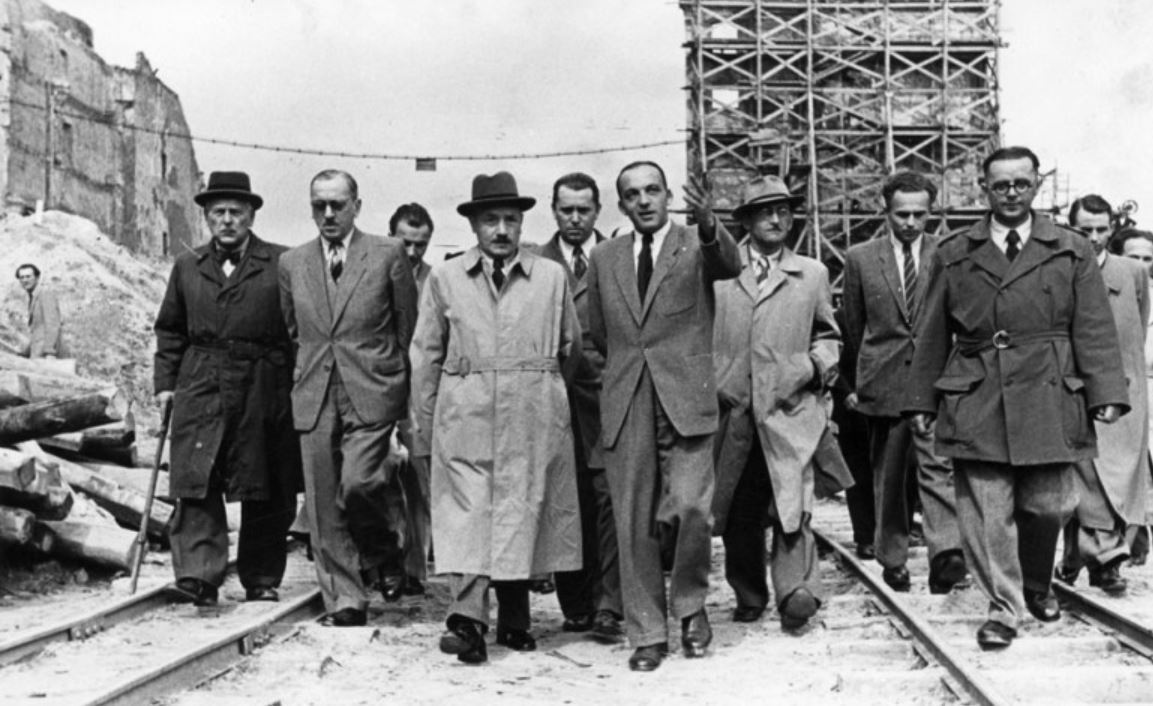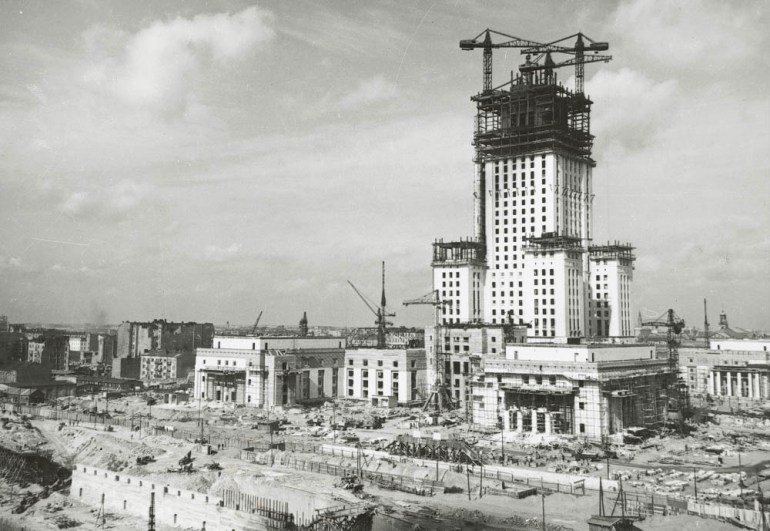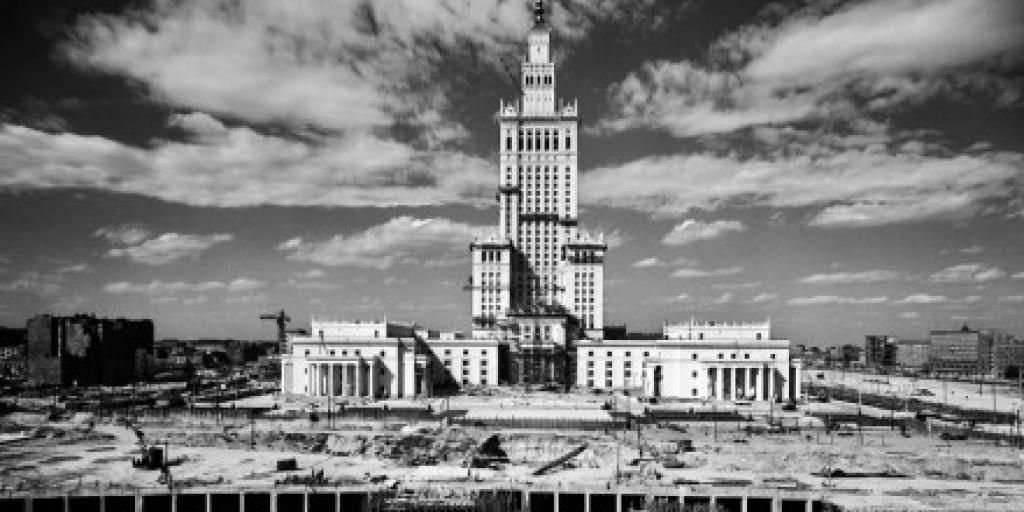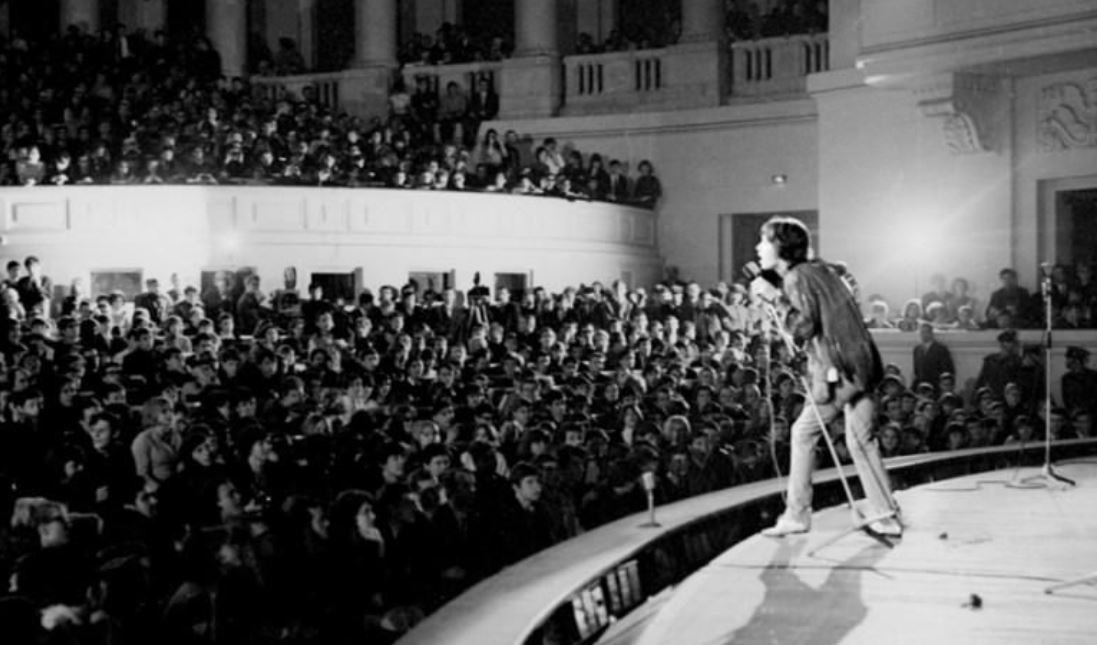Warsaw, often referred to as the 'Phoenix City' for its miraculous rise from the ashes post-World War II, underwent monumental changes in its architectural tapestry. The devastation wreaked by the war was unparalleled: over 85% of the city was left in ruins. Yet, from this destruction emerged an indomitable spirit and a drive to rebuild. The race towards the sky began in earnest, not just as a symbol of economic and political might but also as a testament to the resilience of a people and a nation.
Warsaw's journey to the skies started with the Palace of Culture and Science. Conceived as a 'gift' from the Soviet Union to the people of Poland, the Palace of Culture and Science was built between 1952 and 1955, at the height of the Cold War. Rising 237 meters into the sky, this iconic building embodies the political and architectural tensions of post-war Poland. Its construction was led by the Soviet architect Lev Rudnev. Designed in the Socialist Realist style, this monumental edifice was intended to symbolize the friendship between the Polish and Soviet peoples, but for many Poles, it was an uncomfortable reminder of Soviet dominance.
The structure, often described as a blend of Stalinist architecture with Polish historicism, stands as one of the tallest buildings in the European Union today. Its imposing facades, adorned with mosaics, statues, and ornate details, reflect Soviet ideals. However, inside, it encompasses over 3,000 rooms that house theaters, museums, a cinema, and even a university. The building's functionality, combined with its architectural grandeur, made it a focal point for Warsaw's cultural and social life.
While the Palace has been admired for its architecture and its utility, its symbolism was more divisive. For years after its construction, the Palace was a controversial presence in Warsaw. To many Poles, it was a stark reminder of Soviet control, an architectural imposition that overshadowed Warsaw's historic Old Town. This sentiment was so strong that there were discussions about demolishing the building after the fall of communism in Poland.
However, with time, perspectives have shifted. Today, more than half a century since its inauguration, the Palace of Culture and Science has been reinterpreted by many as a symbol of Warsaw's resilience and adaptability. It's a testament to the city's ability to incorporate, and eventually embrace, even the most challenging elements of its history.
Modern Warsaw has grown around this behemoth, with skyscrapers and business centers creating a dialogue between the old and the new. The Palace, once a sore reminder of external influences, now proudly represents the dynamism and spirit of contemporary Warsaw. The building, illuminated at night, stands not just as a historical artifact, but as a beacon of Warsaw's evolving identity in the post-war era.
In the broader context of war and architecture, the Palace of Culture and Science exemplifies the lasting impact of political decisions on urban landscapes. It's a vivid illustration of how structures can be symbols of power and control but can also be reimagined and integrated into the evolving narrative of a nation's identity.
Images
Image1: Examining the area on which the Palace is to be raised, Warsaw, 1948. In the photograph: Bolesław Bierut, the President of Poland, in the company of the Minister of the Reconstruction of the Country, Michał Kaczorowski, and Józef Sigalin, the attorney for the Palace’s construction. photo: Sovfoto/UIG / East News
Image2: The construction of the Palace of Culture and Science, 1950-55. photo: Forum
Image 3: Building the Palace of Culture and Science, 1953, photo: Forum
Image4: The Rolling Stones performing at Sala Kongresowa of the Palace of Culture and Science, 1967, photo: Wojciech Drushch / Reporter



